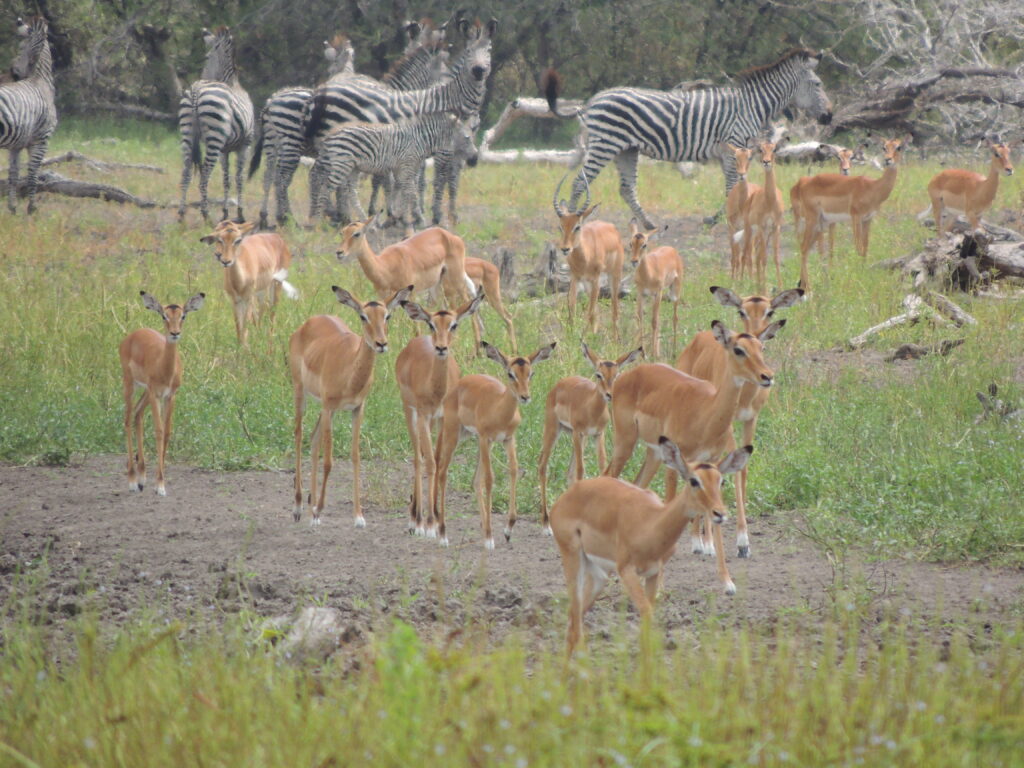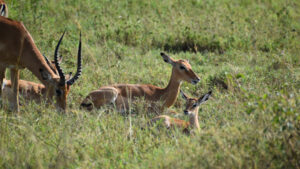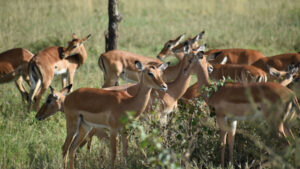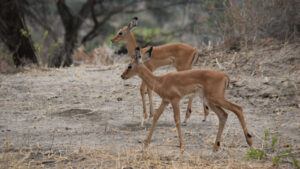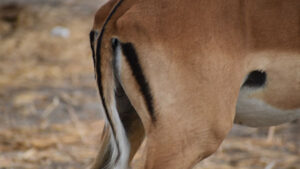The Impala – The Star of the African Safari
Graceful, powerful, and endlessly captivating – the Impala is one of the most iconic sights of the African savanna. With its sleek frame, striking reddish coat, and signature high leaps, the impala isn’t just a background character on safari – it’s a vital player in Africa’s natural drama, shaping the landscape and captivating everyone lucky enough to see it in action.
Impala at a Glance – Key Facts
Lifespan: 10–15 years
Size: Height at shoulder: 75–95 cm / Body length: 120–160 cm
Weight: Males: 50–75 kg/ Females: 40–55 kg
Horns: Only males have horns
- Length: up to 90 cm
- Shape: lyre-shaped, ridged
Speed: Top speed: Up to 60 km/h
- Leap height: up to 3 meters / Leap distance: up to 10 meters
Predators: Lions, leopards, cheetahs, hyenas, African wild dogs, crocodiles
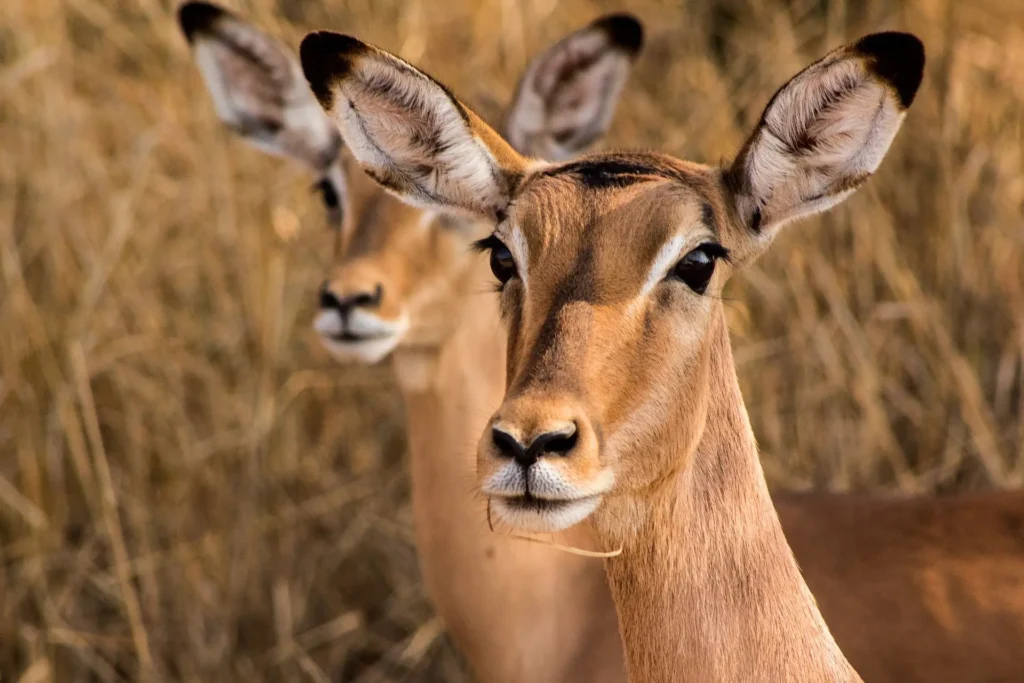
The Beauty in Motion
At first glance, the impala stuns with its elegance. Males sport lyre-shaped horns up to 90 cm long – both beautiful and battle-ready during the mating season. Their glossy coats shift from rich chestnut to creamy underbellies, contrasting beautifully with the golden savannas. Whether standing alert in the sun or springing into motion, impalas radiate grace and strength. But they’re more than just pretty faces.
Jumping Legends
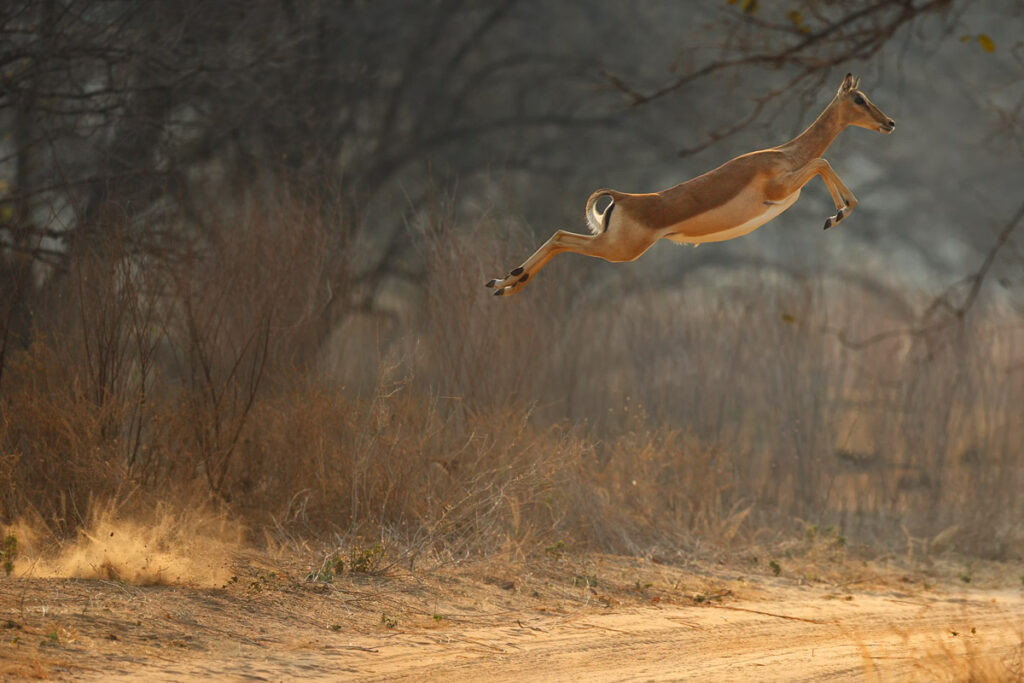
Impalas are the high-jumpers and sprinters of the wild. In a single bound, they can soar 3 meters high and cover over 10 meters in distance – skills that don’t just dazzle but save lives. Their incredible agility lets them escape predators like lions, leopards, and cheetahs with acrobatic zigzags and powerful bursts of speed. Watching an impala take flight is a moment that leaves safari-goers awestruck – a reminder of nature’s raw athleticism.
Social Lives of the Savanna
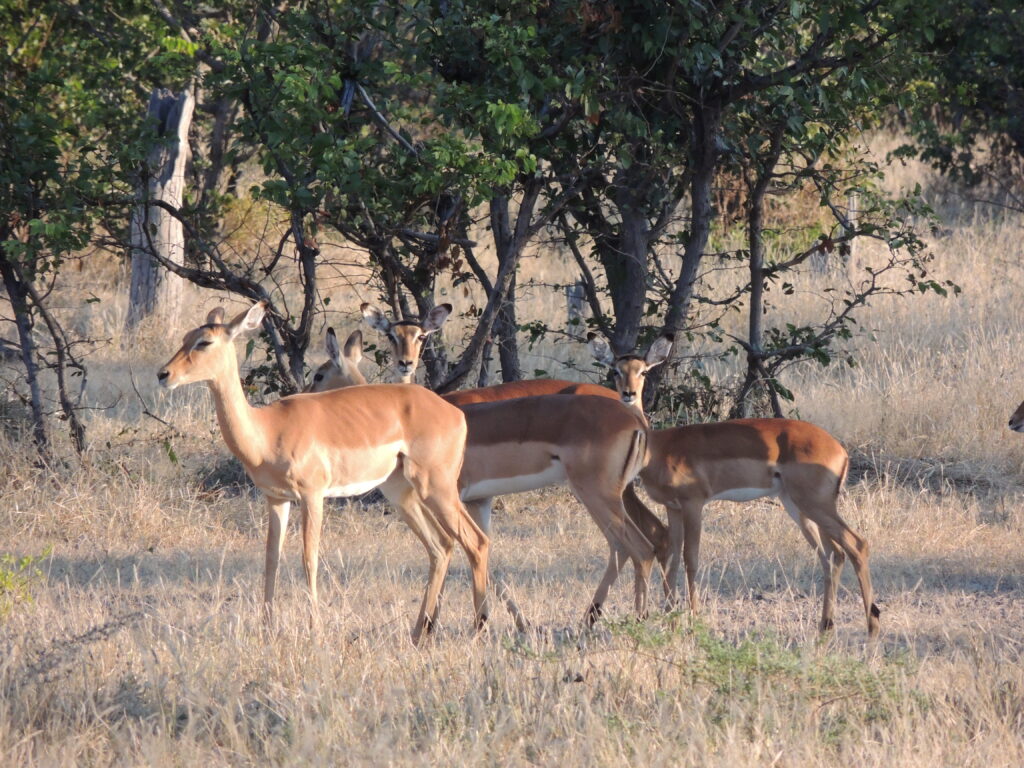
Impalas are deeply social creatures. Males form bachelor herds or establish territories during the intense rutting season, where dominance is settled with roaring calls and dramatic horn clashes. Females and their young stay in larger breeding herds for safety, raising the next generation under the watchful eyes of dominant males. Their social dynamics are complex, cooperative, and at times, theatrical – a wildlife soap opera playing out in the bush.
Rutting, Breeding & Raising the Young
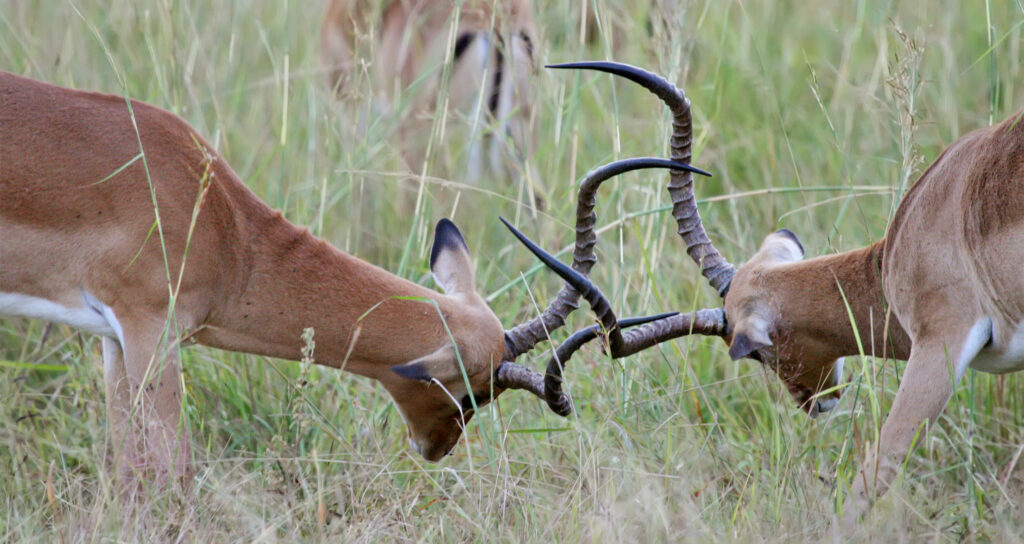
The rutting season, or mating season, usually takes place at the end of the dry season, typically around April to May depending on the region. During this time, males battle for dominance, roaring and clashing horns in dramatic displays of strength. Victorious males establish territories and gather harems of females, fiercely defending them from rival males.
Following successful mating, the breeding season continues as females become pregnant. After a gestation period of about six to seven months, calves are born at the start of the rainy season, usually between November and December – a time when fresh grass is plentiful and water is abundant, giving the newborns the best chance of survival.
Before joining the herd, mothers will hide their newborn calves in tall grass or thickets for a few days to a week, returning only to nurse them. Once strong enough, the young impala rejoins the group and begins to grow up surrounded by its extended family, learning survival skills through play and imitation. This combination of strategic timing and maternal care ensures that the next generation is well equipped to thrive in the savanna.
Masters of Adaptation
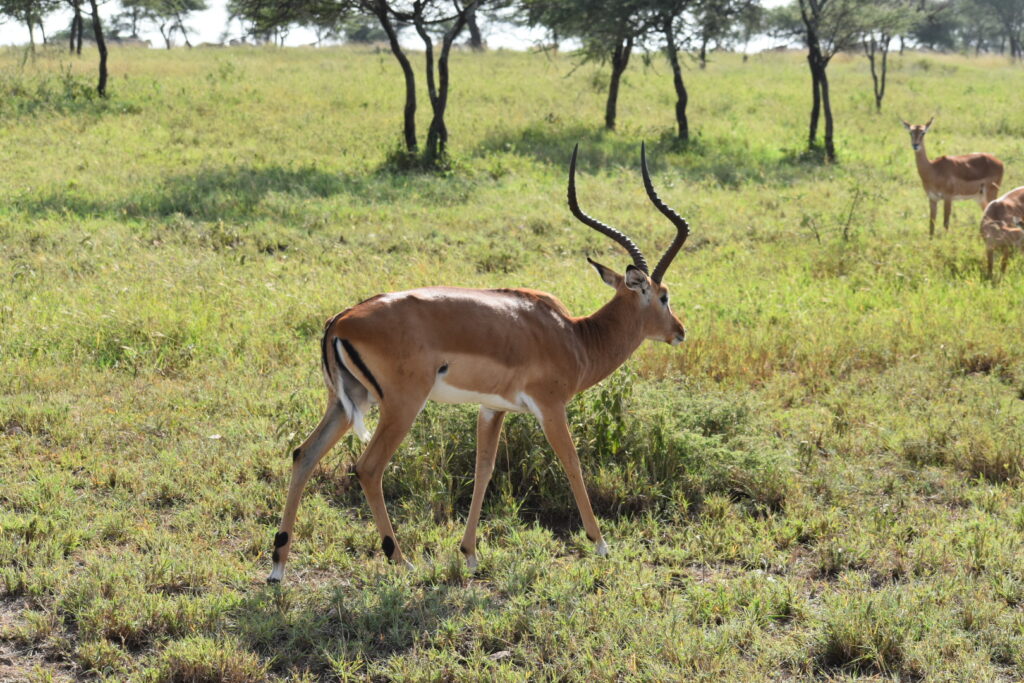
These antelopes are survivors. In wet seasons, they graze on tender grasses. In drier months, they browse leaves and shoots, even munching on acacia flowers when food is scarce. This dietary flexibility means they can thrive in the changing rhythms of the African landscape, from lush grasslands to dry woodland edges.
The Quiet Communicators
Impalas speak volumes – even in silence. They use a blend of vocal sounds, tail flicks, body language, and scent to stay connected. Alarm snorts alert the herd. Roaring bellows mark a male’s territory. Even the black-and-white patterns on their rumps help guide the group when danger strikes.
A particularly fascinating signal is piloerection – the raised hair along the back and flanks of an impala, especially visible during moments of high tension. This involuntary reaction, similar to goosebumps in humans, makes the impala appear larger and more alert. It’s often seen when they sense predators nearby or during confrontations in the rut. Piloerection is a visual cue to others that danger may be near – and it makes the impala’s already expressive body language even more effective.
This multi-sensory communication system is vital to their survival. It keeps the herd coordinated, reinforces social hierarchy, and helps them navigate the ever-changing threats of the wild.
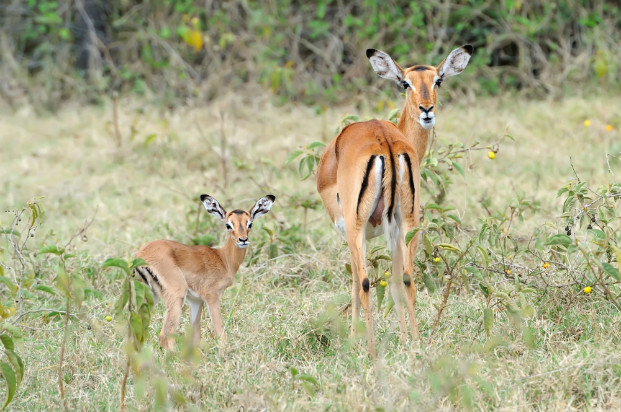
The Hidden 'M'
Nature’s Signature on the Impala
One of the most distinctive features of the impala is the black ‘M’-shaped marking on its rear end, formed by a combination of black lines on the buttocks, thighs, and tail. This subtle but elegant pattern stands out sharply against the animal’s creamy-white underparts and serves several fascinating purposes:
Visual communication: The ‘M’ helps impalas follow each other through dense bush or during rapid escapes, acting like a natural guidepost in motion. When running in a herd, the contrast of the black and white makes it easier for individuals to stay together.
Alarm signal: Along with tail flicking and stotting, the display of the rump and the ‘M’ may act as a warning signal to others that danger is near, triggering group cohesion and escape behavior.
Species identification: It’s also thought to help distinguish impalas from other antelope species, especially for young animals trying to stay with their mothers or herd.
This natural ‘branding’ isn’t just a visual flourish – it’s a clever evolutionary tool that plays a critical role in communication and survival.
Ecological Architects
Beyond their beauty and agility, impalas are ecosystem engineers. By grazing and browsing, they influence plant growth, spread seeds, and help maintain the balance between grassland and woodland. And as a key prey species, they support the survival of Africa’s most iconic carnivores. Lose the impala, and the whole system starts to wobble.
A Safari Must-See
In many cultures, the impala symbolizes fertility and abundance – fitting, given their central role in African ecosystems. But beyond the mythology and science, one thing is certain: no safari is complete without the impala. Their elegance, their drama, their role in the great African story – all make them unmissable stars of the savanna.
So next time you’re on safari, don’t just look for the Big Five. Look for the impala – leaping through the grasslands, locking horns at dusk, or standing perfectly still, hair raised in silent alarm. They are the pulse of the wild.
